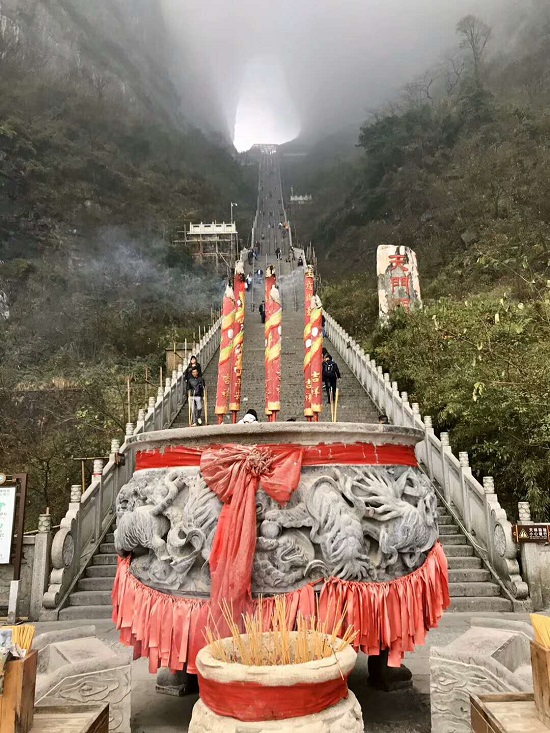
What is the History of Tianmen Cave?
Tianmen Cave, also known as "Heaven's Gate," is a natural arch in Tianmen Mountain, located in Zhangjiajie National Forest Park, Hunan Province, China. This awe-inspiring archway has captivated travelers and pilgrims for centuries, shrouded in legends and steeped in history.
Formation of Tianmen Cave: A Natural Wonder
Originally, Tianmen Cave was a typical karst cave, formed over millennia by the gradual dissolution of soluble rocks like limestone. However, a dramatic event in 263 AD drastically changed its structure. The back portion of the cave collapsed, possibly due to seismic activity or prolonged erosion, leaving behind the iconic archway we see today. This natural bridge, piercing the mountainside, quickly garnered attention and became a subject of fascination and local lore.
The Legend of Tianmen Cave
Legends abound regarding the formation and significance of Tianmen Cave. One popular folktale narrates that the cave's collapse was a divine act, opening a gateway to heaven. This celestial association led to the name "Tianmen," meaning "Heaven's Gate," firmly cementing its sacred status in local beliefs.
Tianmen Cave as a Site of Pilgrimage and Prayer
The association of Tianmen Cave with heaven and divine intervention made it a popular destination for pilgrims. For centuries, people have journeyed to the archway, seeking blessings, offering prayers for good health and fortune, and seeking solace and spiritual connection.
| Feature | Description | |---|---| | Pilgrimage Routes: | Multiple challenging routes, including ancient stone paths and modern cable car systems, lead to the cave, reflecting the dedication of the pilgrims. | | Offerings and Rituals: | Visitors often burn incense, light candles, and leave small offerings as tokens of their devotion and prayers. | | Cultural Significance: | The act of pilgrimage to Tianmen Cave represents a tangible link between the earthly realm and the heavens in Chinese folk belief. |
Tianmen Temple: A Holy Site Atop the Mountain
Adding to the site's spiritual significance is the presence of Tianmen Temple, a Buddhist temple complex perched atop Tianmen Mountain. Constructed during the Tang dynasty (618-907 AD), the temple further bolstered the sacred aura surrounding the cave.
| Tianmen Temple | Description | |---|---| | Architectural Style: | Features traditional Chinese Buddhist architecture, with intricate designs, vibrant colors, and serene courtyards. | | Religious Significance: | Houses numerous shrines dedicated to Buddhist deities, attracting devotees and tourists alike. | | Festivals and Events: | Hosts religious ceremonies and festivals throughout the year, offering glimpses into Buddhist practices and traditions. |
Tianmen Cave Today
Today, Tianmen Cave remains a site of immense cultural and religious importance. It attracts millions of visitors annually, drawn by its stunning natural beauty, intriguing history, and spiritual aura. Whether one seeks adventure, cultural immersion, or a moment of quiet reflection, Tianmen Cave offers a captivating experience.
FAQs
What is the best time to visit Tianmen Cave?
The best time to visit Tianmen Cave is during the spring (April-May) or autumn (September-October) months when the weather is pleasantly cool and clear, offering optimal conditions for hiking and sightseeing.
How long does it take to hike to Tianmen Cave?
The hike to Tianmen Cave is physically demanding and involves ascending the 999 steps. On average, it takes approximately 2-3 hours to complete the climb. However, visitors can also opt for the cable car, which offers breathtaking views and a quicker ascent.
Is there an entrance fee for Tianmen Cave?
Yes, there is an entrance fee for Tianmen Mountain National Park, which includes access to Tianmen Cave, the cable car, and other attractions within the park. It is recommended to purchase tickets in advance, especially during peak season.